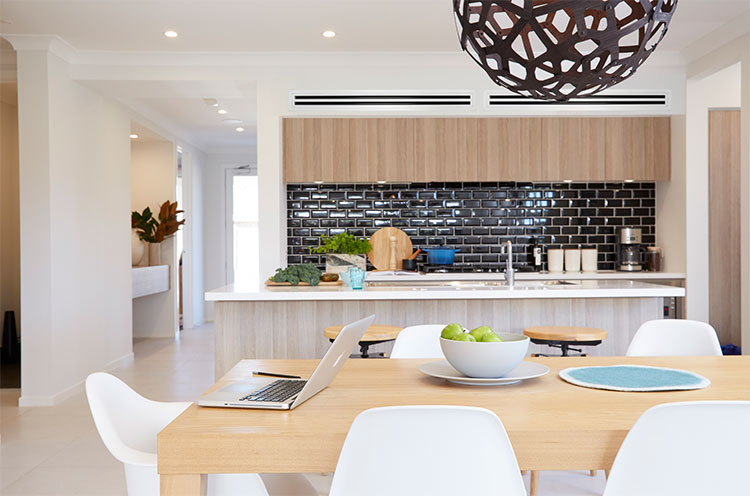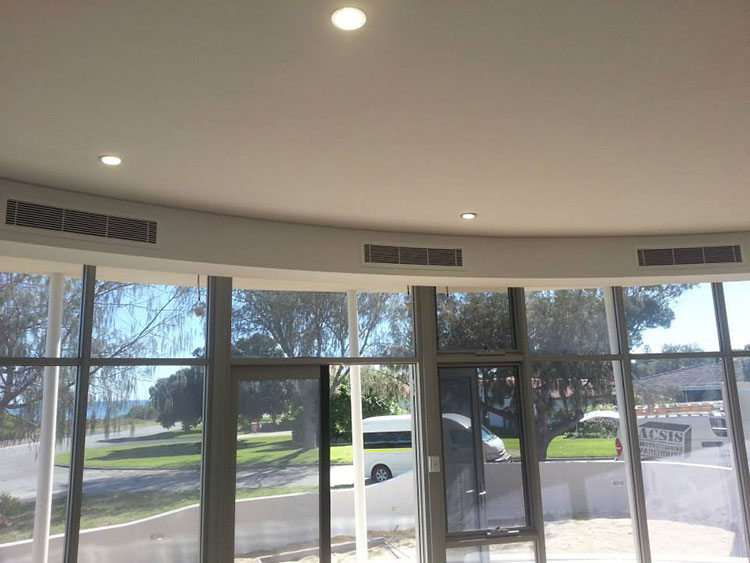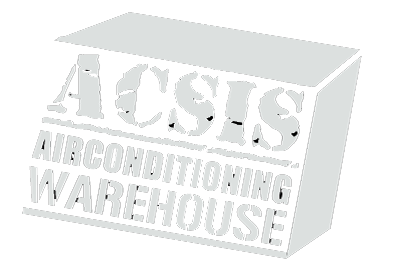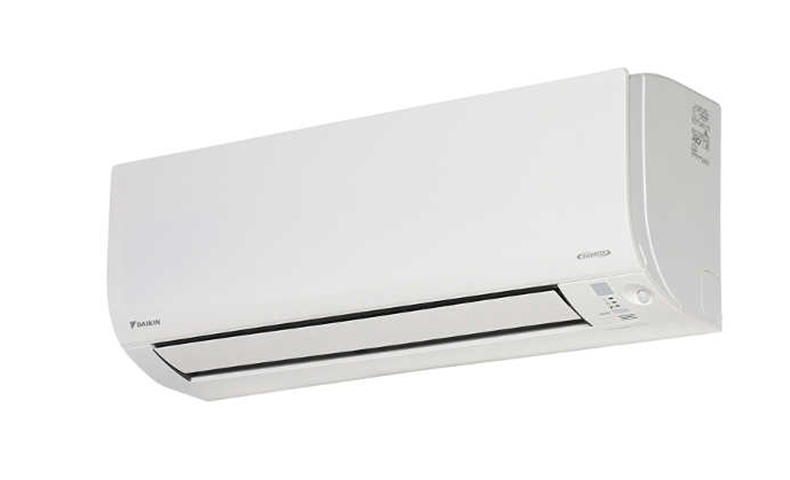Evaporative systems are quite affordable to buy and install. It is why they are among the top choices of homeowners and even small business owners who are on a tight budget. However, more and more consumers realise that their decision to purchase such a unit is not as cost-effective as they would have liked.
A solution is to convert from evaporative to a reverse cycle air conditioner. If it is the first time you have heard about it, you may be wondering whether or not it is truly possible. The good news is that you can and you will learn how in this post.
What is an Evaporative System?
First, let us take the time to learn what an evaporative system is. An evaporative system, also known as an evaporative cooler or swamp cooler, is a type of AC unit that some homes in Perth use. These units are often useful during the hot summer months.
The system uses pads soaked in water, which will help cool the air. It takes place when the fan inside the unit pulls hot air into it. The warm air will be released through the water-soaked pads, which work by prompting the evaporation of the liquid.
At this point, the water evaporates and absorbs the heat, therefore making the air cooler. It is similar to putting cold water on your skin during a hot summer day.
You may think that the process is the same with air conditioning units. In a way, they do have similarities. An AC also takes in hot air from the room and cools it down. It will later get rid of the heat by expelling it, and the system will blow out cold air in return.
However, the manner of cooling is different between the two. Air conditioners draw humidity from the air while evaporative coolers add moisture to the air. This system has a fan, which circulates the air, generating a breezy feel, so the room is cooler than it was.
Many dry environments will find evaporative systems efficient for cooling down since they add moisture in the air with the process known as evaporation. With the dry air, cool moisture is absorbed, which then leads to a cooler temperature in the room.
What is a Reverse Cycle AC Unit?
Even with the benefits of evaporative systems, homeowners now want to switch to reverse cycle air conditioners. The function of this type of AC is different compared to regular air conditioners. Reverse cycle is based on the concept of conventional electric heaters and coolers.
However, it does not have to create energy as conventional heaters do. Rather, it absorbs heat that comes from the air outdoors. Then, it will warm the air inside, making this machine incredibly energy-efficient. It is perfect for those who contend with the climate in Perth.
This type of air conditioning unit has a reversible refrigeration cycle, which means that it produces heat rather than cooling. You can think of it as two systems in one unit. These two systems work harmoniously together to give you a more comfortable living environment.
In cooling mode, this AC type works like the air conditioner you are used to. However, if you turn on reverse cycle for heating, it performs the following:
- The evaporator coil will switch its role to reverse the cycle. In this case, it will become the condenser coil, which will then allow the unit to produce heat.
- Meanwhile, the condenser unit, which is located outdoors, will switch its role as well. As a result, it will become the AC’s evaporator, causing it to discharge cold air instead. The air will be much colder compared to the air outside.
A reverse cycle air conditioner is a great appliance to have whether in summer or winter.
Why Change from Evaporative to Reverse Cycle
While evaporative systems are useful in some areas, they are not as efficient when the place has high humidity. Perth’s average humidity is 52.3% with the lowest in January at 43% and the highest in June at 63%.
Think about adding more moisture when the air is already humid. It will not be comfortable, especially during both summer and winter. Evaporative systems will absorb moisture and generate cooler air in the environment. Therefore, if you use it in Perth in high humidity periods, the equipment will be nearly ineffective. The air is already moist, and adding more moisture is not recommended for such a climate.
If you still have not decided to change from an evaporative unit to a reverse cycle air conditioner, here are some of the top reasons why others are doing the switch:
- The unit will keep you warm in winter.Winters in Perth are normally cold and wet with the lowest temperature reaching eight degrees Celsius. Sometimes, there would be storms, which can make your home cooler than usual. You need reliable equipment that will keep you warm during these cold days.Reverse cycle air conditioners have an efficient heating technique. When the heating mode is on, the unit will draw heat from the outside air. Then, it will later distribute the air into the room.It can get technical from here. A refrigerant passes through the external coil of the unit. It works by absorbing heat from the air outside the room. This particular refrigerant will be pumped through the unit’s compressor. It will move to the fan coil, which is inside the indoor unit. The result is heat released into the room.Even better, it does not have to be warm outside so the unit can accomplish this function. It works the same even in freezing conditions as long as it is in heating mode. It is, however, essential to find a good brand and model with cold weather in mind. This way, the reverse cycle air conditioner will still be effective even when the temperatures drop to -15 degrees Celsius. You may have to look for a unit with an automatic defrost cycle to ensure it can perform as expected for your heating requirements.
- The system will keep your home cool and comfy.
The unit is easy to use. With just a flick of the switch, it will cool your home. As an energy-efficient system, it will absorb heat from the air inside the room, dissipating it outside. The result is a much cooler home even when the temperature is as high as 46 degrees Celsius. - Reverse cycle AC is made with efficiency in mind.When people describe reverse cycle air conditioners, you will usually hear the word “efficient.” It is because the unit is indeed efficient, whether in energy use or cost. It is suitable for cooling and heating, so you do not have to switch to another appliance.Modern systems are a good investment for your home. While the electricity costs continue to increase, these systems are built to keep energy consumption low. On average, every one kW of energy you use will generate at least three kW of energy for heating or cooling.Other air conditioners may not even provide the same efficiency. You will have to look at the energy rating of the product to ensure that you are getting what you paid for – or even more. Check the number of stars the appliance has, which denotes its energy rating.
- The units are convenient and adaptable.Achieving energy efficiency is expected to be a long battle. However, small steps can have a huge impact. Modern reverse cycle air conditioning units are designed with energy efficiency in mind. They come with technologies that adapt to the condition and temperature of the environment. Typically, they have thermostats and an inverter.Thermostats allow you to control the temperature of a certain room. Meanwhile, inverter technology is similar to the car’s accelerator. It will adjust the power usage while reaching a suitable temperature faster. No fluctuations will be experienced, guaranteeing that you will have a steady room temperature. It means you can enjoy undisturbed comfort and adaptability as the AC performs its best.
- You get more benefits than when you use a portable heater.Many people think that it is better to use a portable heater, which is quite affordable compared to a reverse cycle AC unit. However, what they do not know is that these heaters are extremely costly to operate.Before you decide whether to go for a portable heater or a reverse cycle air conditioner, you should first consider the size of the room that requires heating. Portable heaters are typically useful when the room is smaller. They are not even recommended if you need to warm your entire room. If you only require heating for the area beneath your feet, you may find them helpful. However, most people need more than just heating a small space.It is why reverse cycle air conditioners are more practical. Plus, they are safer to use. The heat emanates to a wide area, so you can get the comfort you need even when you are in the far corner of your room.
- You get a two-in-one system without paying twice.Reverse cycle systems come with two functions. You can easily and quickly change from heating to cooling with just a switch. Sometimes, the Perth weather can be quite unpredictable. You may be using a heater now, but you could need a cooler the next day. With this unit, you do not have to buy both a heater and a cooler because it comes with both functions.
- Reverse cycle air conditioners are good for those with allergies and asthma.This type of AC can purify the air, meaning it can rid smoke and dust in the room. Many systems these days have this special feature where they have a built-in filter that can cleanse the air. This filter can effectively trap microscopic particles in the air.Depending on your AC unit, it may even eliminate odours and neutralise bacteria and viruses. Therefore, these systems are great for those who would often sneeze every few hours, even if it is not the allergy season.Asthma sufferers will also benefit from the clean air. The Australia Bureau of Statistics declared that more than 2.7 million or 11% of the Australian population has asthma. Aside from the high rates of asthma, many people also have allergies and hay fever every year. Reverse cycle systems can help reduce the instance of allergies and asthma attacks.
- This AC is not just great for people but also for the environment.Reverse cycle air conditioning units emit only a third of greenhouse emissions compared to a standard electric heater. You can even find some systems that are rated five or even higher, such as Daikin’s split system with a seven-star rating. It means that the system will produce less than 0.2% of the emissions of traditional electric heaters.Look for a system that uses R32 instead of the R410A. This new refrigerant has a 66% lower potential factor in global warming than the traditional R410A. With lower greenhouse gas emissions, we will live in a happier planet.
How to Switch from Evaporative to Reverse Cycle
The advantages of using a reverse cycle air conditioning unit may have convinced you to make the switch. Evaporative systems may be cheap at first, but continuous operations will prove that they are not energy-efficient at all.
Changing from evaporative to a reverse cycle unit is not a big challenge. However, you should first know certain facts before you make a big move.
-
- Should you use the existing ducting for ducted reverse cycle air conditioner?A common question that homeowners ask is whether or not they can use the existing ducting. Unfortunately, you cannot use it because the sizing is different. With a reverse cycle AC, you only need small ducts unlike with evaporative systems. Appropriate sizing is important to maintain the needed velocity of the unit.Before the installation, you should inform the installer that you plan to switch from your old evaporative unit to a better AC. You will learn that it is not possible to use your current ductwork. Reverse cycle units require ductwork that is customised with the branch ducts. This way, the unit itself can be used through a zoning system, meaning it can operate at different temperatures in various rooms.Evaporative units are not designed the way reverse cycle systems are. The former operates in all of its outlets at the same time, giving off the same temperature and mode (heating or cooling). Meanwhile, ducted reverse cycle system is controlled using a thermostat that regulates temperature and mode in each room. At the same time, this unit requires a return air ducting, which will allow it to recirculate air.
- Is using the current outlets acceptable?Speaking of outlets, you may be wondering if you can use the existing outlets you utilise for your evaporative system. Again, the answer here is no. As mentioned, the reverse cycle unit recirculates air, which means there should be corresponding outlets close to the borders of the room, such as near the windows. This way, air can be drawn back from the area as it accomplishes the cycle by returning the air to the room.On the other hand, evaporative air requires space for it to escape the room. It can be through the windows, doors, or vents. Therefore, these outlets must be near the centre of your home. For instance, if the system is in the bedroom, the outlets should be near the door. This way, air can travel and be diffused from the inside of the house to the outside as it conditions the air.
- Should you install new outlets or diffusers?It may sound like the best option now is to install new outlets. However, most homeowners are not keen on repairing the holes that they have in the ceiling after installing the evaporative system. They also have to paint the ceilings to make them look presentable again. For many, it is an exhaustive and time-consuming job.The ultimate solution is to find a credible installer that can install streamlined diffusers that will manoeuvre the air into the other part of the room whenever it is required. Then, the air will circulate back to where it came from for an efficient cycle.
-
- Is it an expensive endeavour?In reality, it is more expensive to swap your old evaporative system to a reverse cycle air conditioner than to simply buy a new reverse cycle AC. Consider the ducting that you have to work on, along with the entire installation process. It can cost you more than to purchase a reverse cycle air conditioner and skip the evaporative system altogether.However, if you already have an evaporative system installed, then you have no choice but to change it to a reverse cycle air-con. It will cost a lot of money, especially because you have to arrange for the outlet holes to be covered and plastered over. As mentioned above, you also have to repaint your ceilings unless you are fine with the ugly holes peeking through. You also need to replace the cut metal roof sheets or tiles.
- What are the electrical requirements when installing a reverse cycle system?Another important thing to know about is that there are electrical requirements you need to comply with. Both the mains and electrical switchboards must be assessed first. It ensures that your home can handle the air conditioner. Most new homes have no problem with this one, which is why some homeowners carry on with the installation process without the assessment.
- What is the best reverse cycle air conditioner?Many of the products we have today in the market are spectacular, especially those from Panasonic, Daikin, and Mitsubishi. As much as possible, stick to a brand new system and avoid second-hand products. You should also consider many factors based on your home and its design:
-
- The floor plan of your home
- The number of levels
- Ceiling height and other dimensions
- The direction that the rooms face
- Window orientation, position, and size
- Door characteristics, including positioning and sizes
- Ceiling, wall, and floor insulation
Number of inhabitants in your home
-
- The type of room that requires heating and cooling
- Outdoor space limitations
You should also take into account your home’s construction style, such as full-brick or weatherboard. The cavity space of the ceiling is important as well because you might need ducts under the flooring instead. The installer may suggest using slimline systems instead. Finally, be sure that the ducting meets the AS 4254, which is the Australian standard for ductwork.
When you are ready to start the switch, contact ACSIS Air to get hold of Perth air conditioning specialists you can trust.





